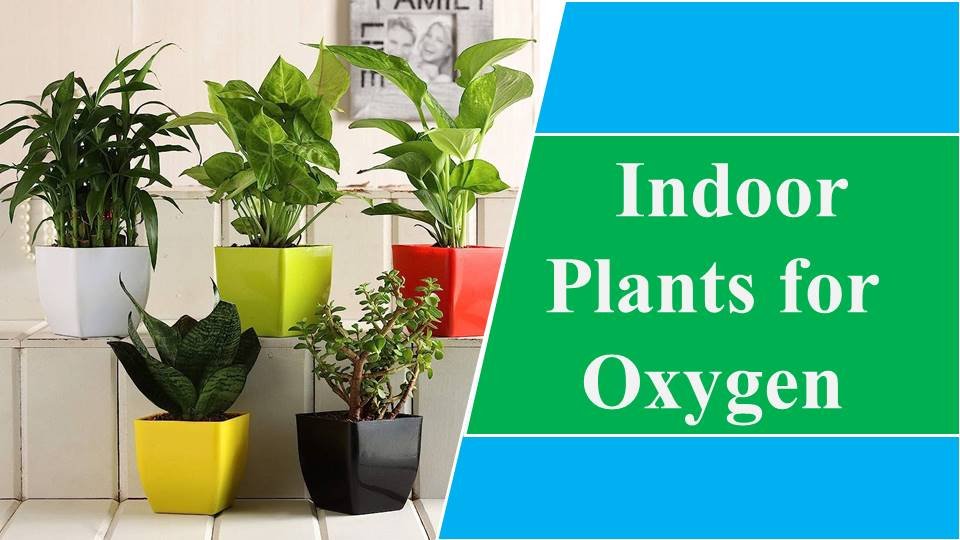Indoor Plants for Oxygen –Let’s explore some indoor plants for oxygen, their incredible ability to enhance the oxygen levels within your living spaces. Discover the green companions that not only add beauty to your home but also contribute to a fresher and healthier environment.
As a result of rising pollution levels, the air quality is deteriorating daily. Infections including bronchitis, sinus infections, asthma, and numerous other breathing problems are made more likely as a consequence of this. Our homes are the only places that can protect us from all harmful conditions, including the sun, contagious diseases, strong winds, pollution, etc. We cherish our house because we believe it to be the safest place to live, we treasure our home.
However, the reality is that, on certain occasions, indoor air can have harmful amounts that are far higher than those in outdoor air due to insufficient ventilation. As one of the primary providers of oxygen, plants are known to be crucial to human life on earth. Indoor oxygen plant can help maintain a sufficient quantity of clean air and oxygen even if pollution and breathing hazardous substances cannot be prevented. Being surrounded by greenery has an unfathomably calming or delightful effect, but some plants can really improve your breathing by producing more oxygen. Having plants indoors can enhance the quality of the air as well as your mental well-being and sense of tranquility.
Clean air is a fundamental human right. However, we don’t often have access to clean air to breathe, particularly in cities. At this point, purchasing an air purifier to clean our surrounding air appears to be the only practical alternative. Air purifiers are pricey, though. So what do we need to do?
NASA Clean Air Study
The National Aeronautics and Space Administration (NASA) and the Associated Landscape Contractors of America (ALCA) collaborated on the NASA Clean Air Study in 1989 to look at techniques to purify the air in enclosed spaces like space stations. Its findings revealed that several popular indoor oxygen plants may also offer a natural means of eliminating volatile organic pollutants (benzene, formaldehyde, and trichloroethylene were examined), in addition to collecting carbon dioxide and releasing oxygen through photosynthesis.
Sources of Indoor Pollution
Here are a few of the origins of indoor air pollution. In our houses, we need to protect ourselves from these harmful substances. Using chemically created sprays and products is not a long-term solution because they cannot be used consistently and may result in new issues.
The World Health Organization estimates that household air pollution kills over 4.3 million people annually. Are you for real? The primary source of this pollution is the burning of conventional cooking fuels including firewood, charcoal, and cow dung (which release dioxins). They produce polycyclic aromatic hydrocarbons, particulate matter, CO, NO2, and SO2, among other chemicals and pollutants.
In addition to this, smoking of tobacco, dry cleaning of clothes, some household products like Dishwashing liquid, detergents, pesticides, carpets, insect repellents, air fresheners, deodorants, electric appliances, and wooden furniture are just a few of the products that contain numerous chemicals, some of which are discharged into the air and contribute to pollution. Chemicals called volatile organic compounds (VOC) are released by them. Other pollutants are Formaldehyde in paper bags, waxed papers, tissues, paper towels, plywood paneling, and synthetic materials.
Read More:
- Summer Flowering Plants in India: 10 Outstanding Blooms
- 10 Popular Creeper Flowering Plants For a Garden Paradise
Chemicals like benzene are used to make medications, lubricants, detergents, polymers, and resins. Additionally, it can be found in tobacco smoke, furniture wax, and glue. Xylene can be found in rubber, leather, cigarette smoke, and automotive exhaust. Ammonia is a component of fertilizers, floor waxes, smelling salts, and window cleaners. A hazardous gas called nitrogen dioxide (NO2) is produced when fuel is consumed in factories and by automobiles. It is particularly concentrated in locations that are congested with cars and traffic.
Indoor Plants for Oxygen | Indoor Oxygen Plants
Here are the 15 amazing indoor plants that can purify your home by the release of oxygen. Let’s look into the world of oxygen plant indoor in their alphabetical order.
1. Aglaonema
Aglaonema comes in a variety of colors, including green and red. They are fantastic, adaptable indoor plants that have long been listed as “preferred” oxygen plants by experts for indoor. It is a tough plant that thrives practically anyplace and in any lighting indoors.
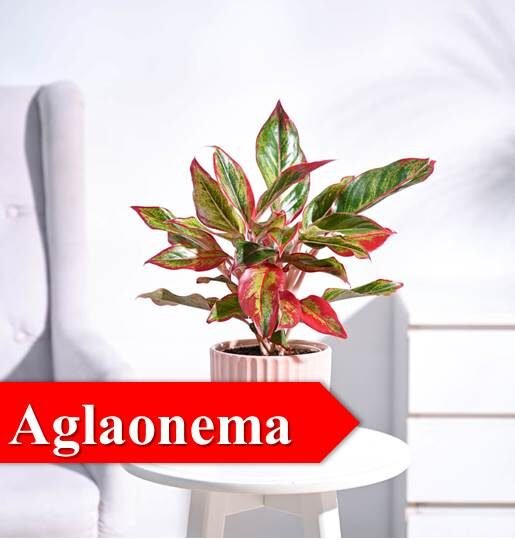
With its beauty, low illumination at home or work is not a problem. A plant that requires very little maintenance and has a long history of reliable growth. Aglaonema, also known as Chinese Evergreen, has long been cultivated in Asia as a good luck charm. The Aglaonema plant is the best air purifier and has been found to remove formaldehyde, benzene, and other contaminants from indoor air. Aglaonemas are the perfect plant for shady areas when a lovely foliage display is required.
2. Aloe Vera
You are undoubtedly well aware of the fact that Aloe Vera is a popular houseplant because of its healing properties, which make it beneficial for both health and aesthetics. It also has the ability to help several common pollutants present in your household detergents, paint, and glue by cleansing the air. Aloe Vera cleans the air as you sleep since it releases oxygen at night and absorbs carbon dioxide during the day. NASA’s study report has stated Aloe Vera as an excellent air purifying indoor plant.

3. Areca palm – Best Indoor Plants for Oxygen
The areca palm is a natural cooler that can remove xylene and toluene from the atmosphere. It can also add moisture to the area, absorbing all the toxins and leaving the air clean and fresh. Make sure the plant is not exposed to direct sunlight as this can cause the leaves to yellow. It can reach a height of 100 feet in the wild, but it can only reach 6-7 feet indoors.
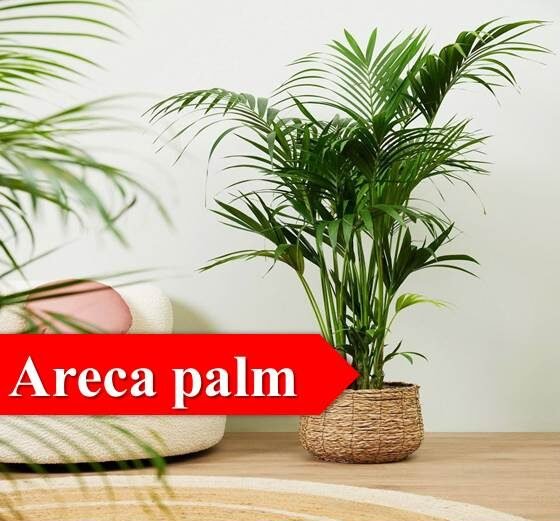
4. Dracaena
Dracaenam – indoor plants for oxygen, is a flowering plant that is widely used as an indoor plant. One indoor plant that helps lower indoor pollution levels is the dracaena. The plant produces water vapor, which raises air moisture levels and lessens dry air conditions. This houseplant provides beauty to interior spaces. They can be kept indoors, outside, or in the garden. With modest sunlight and watering requirements, the dracaena plant kinds are simple to grow.

5. English Ivy
With its winding, trailing growth style and readily recognized leaves, English ivy has certain attractiveness. The interior of the house is equally as stunning as the exterior. English ivy assists in removing some allergens from the home, such as mold and other fungus growth, and indoor air pollution. Therefore, this plant is one of the most sought-after interior air purifying plants due to its dual significance of enhancing the atmosphere and its lovely attractive appearance.
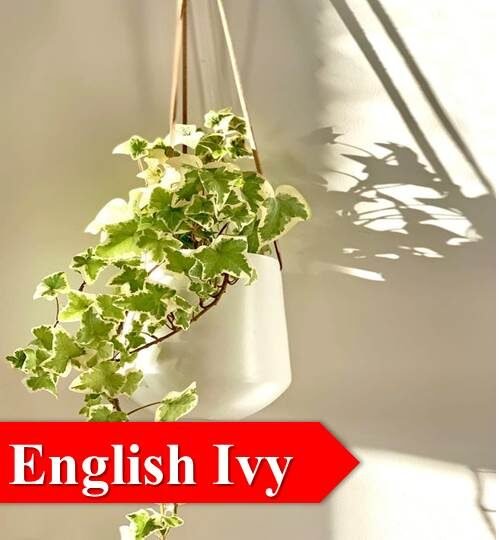
6. Gerbera Daisy
One of the best indoor plants for oxygen and cleansing the air is the gerbera daisy. Why? According to NASA tests, it can absorb 67% of benzene, 50% of airborne formaldehyde, and 35% of trichloroethylene in just 24 hours! Gerbera daisies are not only a superb filter, but also non-toxic to pets.

7. Holy Basil
Tulsi, commonly referred to as Holy Basil, is a well-liked indoor plant renowned for its continuous oxygen production. Originating in India, it holds a rich history in Ayurvedic medicine spanning centuries. This evergreen shrub features aromatic leaves and petite purple blossoms, flourishing best in warm environments with ample sunlight.
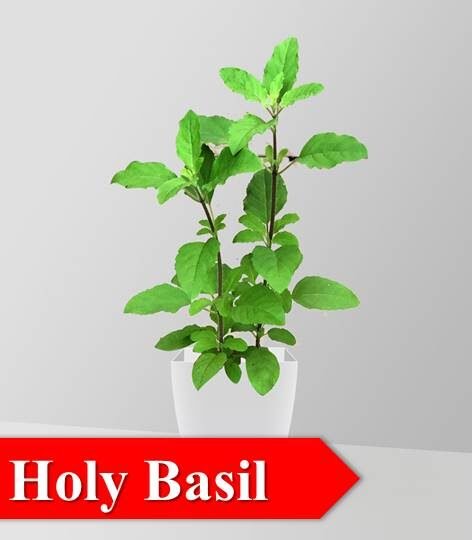
Recognized for its air-cleansing characteristics, Tulsi aids in lowering carbon dioxide levels in the atmosphere. This oxygen generating indoor plants establishes it as an excellent option for enhancing the quality of indoor air.
Read More:
- 365 days Flowering Plants in India | All Season Flowering Plants in India
- Top 15 Night Blooming Flowers | Flowers that Bloom at Night
8. Lucky Bamboo
Introducing an exquisite and adaptable indoor plant: the Lucky Bamboo plant – oxygen rich indoor plants! For those in pursuit of a fresh addition to their plant collection, your quest ends here.

The Lucky Bamboo plant has emerged as a highly favored choice, embraced by numerous households. With the belief in its capacity to create purifying vibes, the Lucky Bamboo plant has a historical lineage spanning millennia, revered for its ability to foster positivity and prosperity within living spaces.
9. Money plant – Room Plants for Oxygen
Money plants have the ability to help filter the air, just like all indoor plants. The airborne pollutants benzene, toluene, xylene, and formaldehyde are reduced by plants. The oxygen flow in your house may be improved as a result. Even at night, money plants continue to create oxygen, in contrast to the majority of other plants, which produce carbon dioxide. Without additional data, several experts question whether we can sustain claims like this.
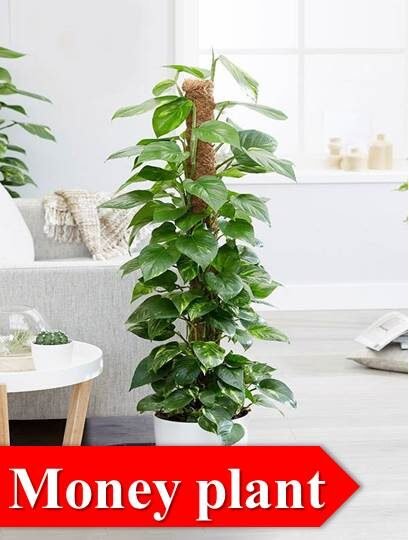
10. Peace Lilly
White blossoms are distinctive and striking on peace lilies. They are a sign of riches, charm, and good fortune. They require little maintenance and are a wonderful way to increase indoor oxygen levels. In addition to being attractive, peace lilies can help your home by providing clean, oxygen-rich air. Peace lilies are very good at eliminating airborne impurities. Peace lilies are effective at removing benzene and trichloroethylene, according to NASA tests. These two pollutants are commonplace in both residences and workplaces.

11. Philodendron
Beautiful green plants like philodendrons are utilized to spruce up outdoor settings. This leafy green plant is one of the most commonly used sources of oxygen as well as a significant toxin and impurity remover. Try cultivating this green beauty indoors for clean air throughout the house.
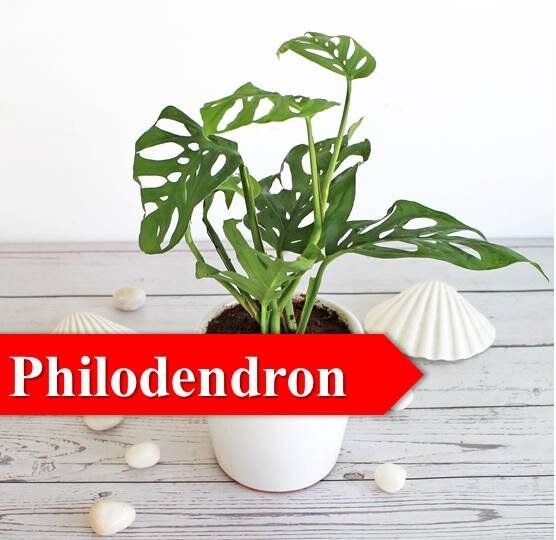
12. Snake plant
Snake plants, like other domestic succulents, assist in air filtration. This specific plant is special because it is one of the few living things that can change carbon dioxide (CO2) into oxygen at night. Due to its ability to maintain a healthy airflow, this characteristic makes it the perfect plant for bedroom décor. The removal of harmful air pollutants is another property of snake plants. Snake plants can absorb cancer-causing chemicals in minute amounts, such as Benzene, CO2, Toluene, formaldehyde, xylene, and trichloroethylene. Snake plants may provide a powerful barrier against allergies brought on by airborne pollutants thanks to their capacity to absorb and eliminate these toxins.

13. Spider plant
The ability of spider plants to filter and purify the air in your house is their most significant indoor benefit. “Breathe deeper with this plant in your environment because it’s perfect for filtering airborne toxins like formaldehyde, toluene, and xylene.” According to scientists, spider plants are among the greatest indoor plants for purifying the air. Spider plants did better in the experiment than other plants in NASA’s 1989 Clean Air Study. Additionally, it has been demonstrated that spider plants can eliminate 95% of toxins from the air around them in just 24 hours.
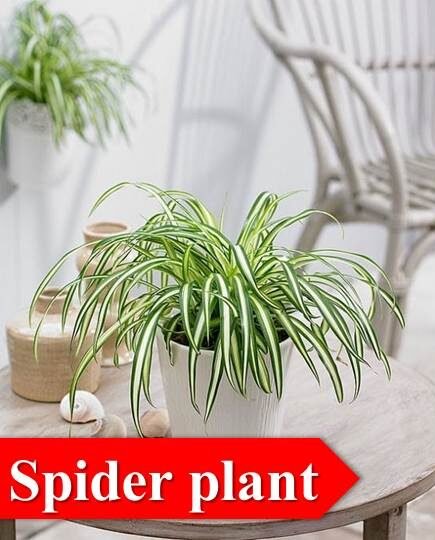
14. Sword Fern
One of the well-known daytime photosynthesizing plants is the Nephrolepis Exaltata Fern Green Plant. Boston Fern and Sword Fern are other names for it. This causes them to absorb dangerous contaminants that are commonly present in indoor environments. One of the most frequently utilized plants for decorative purposes is this one. Consider adding this plant for oxygen to your home for its aesthetic value as well as its benefits to your health. It is an essential plant for your area and an evergreen perennial.

15. Weeping Fig
This plant is a Ficus member. It can grow indoors to a height of 3 to 6 feet. It is a lovely indoor plant that NASA has acknowledged as an effective air cleanser. You may create great environment with this oxygen indoor plants good for health within your home by keeping this plant. In actuality, consuming this can be hazardous for pets.
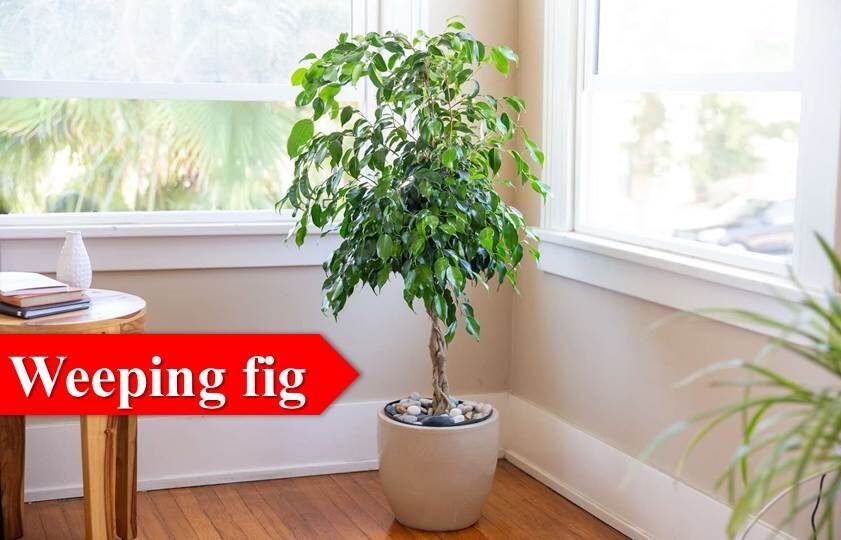
Read More:
- 13 Different Types of Money Plant for Wealth and Good Vibes
- Top 25 Flowering Trees in India: Colorful Display of Nature
Conclusion
Let’s not undervalue nature’s quiet but powerful gift of cleaner, more energizing indoor air provided by the presence of these amazing oxygen-producing plants as we continue to negotiate the pressures of contemporary life.
Latest Post
- Why Money Plant is called Money Plant ? Answer in 5 min

- How to grow Monstera from Cutting: 5-Step Detailed Guide

- Latest 10 Finest Terrace Garden Ideas to Transform Your Rooftops

- Top 10 Low Light Hanging Plants to make your Room Crunchy

- Low Maintenance Indoor Plants for India: 15 Best plants for home gardening
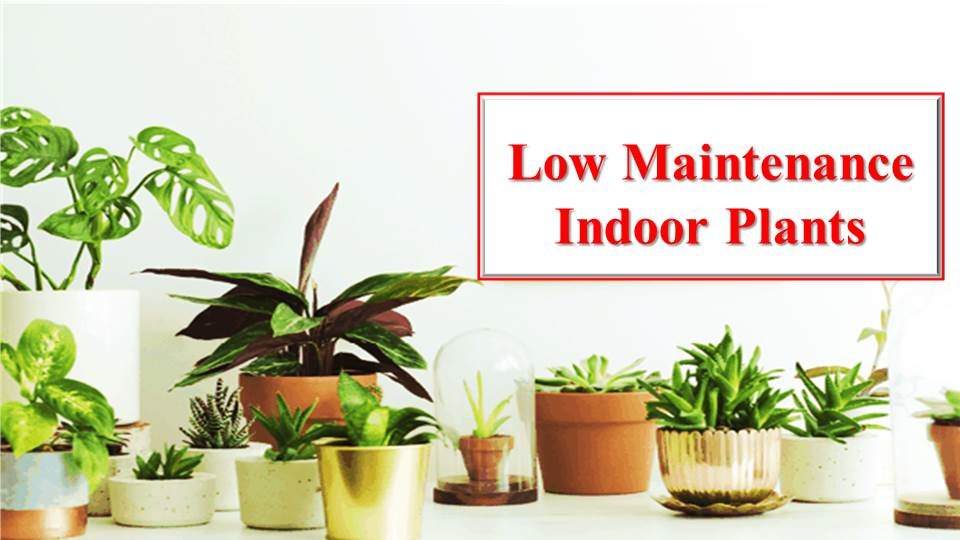
- Top 23 Flowering Trees in India: Flower Tree for Home



